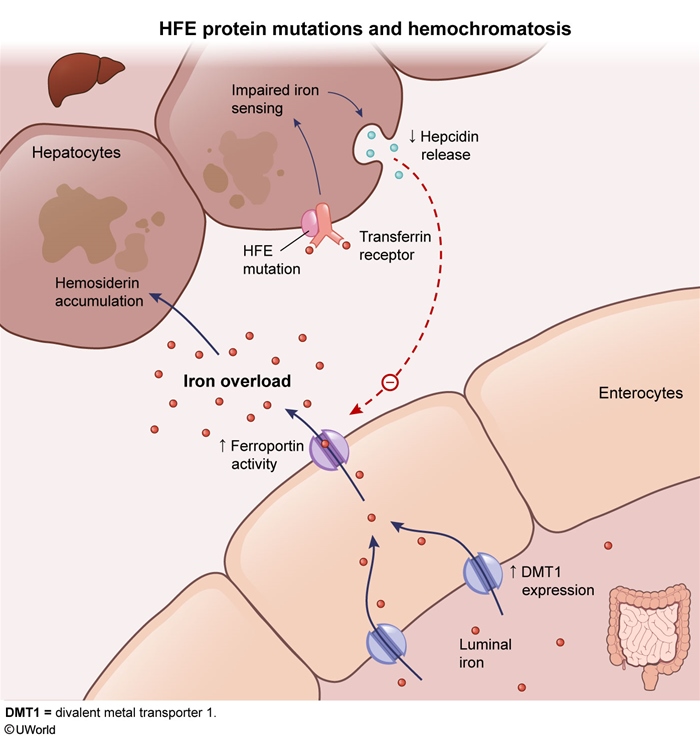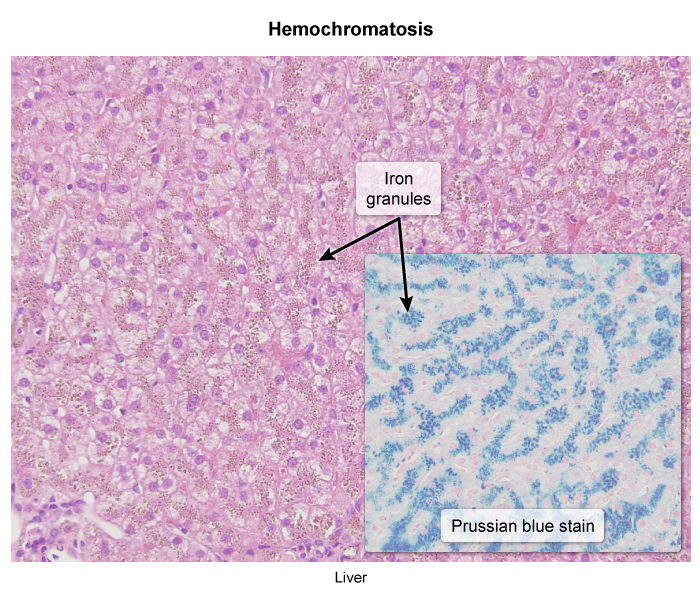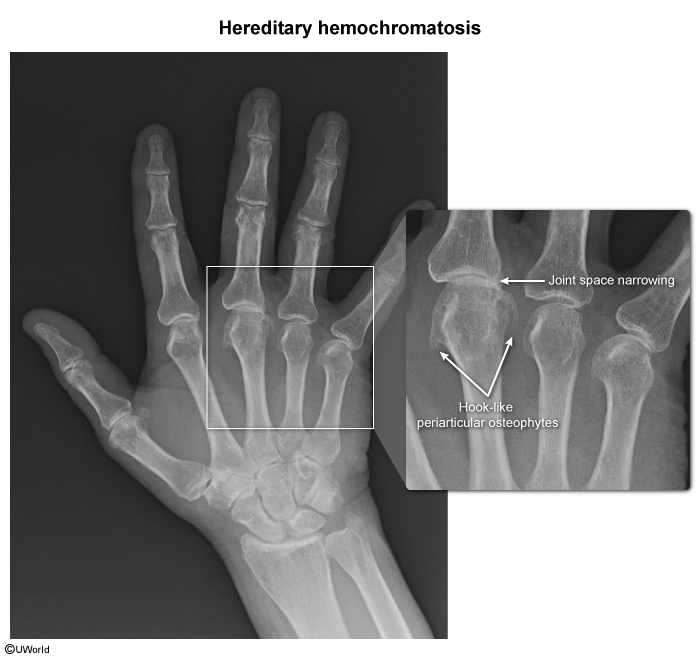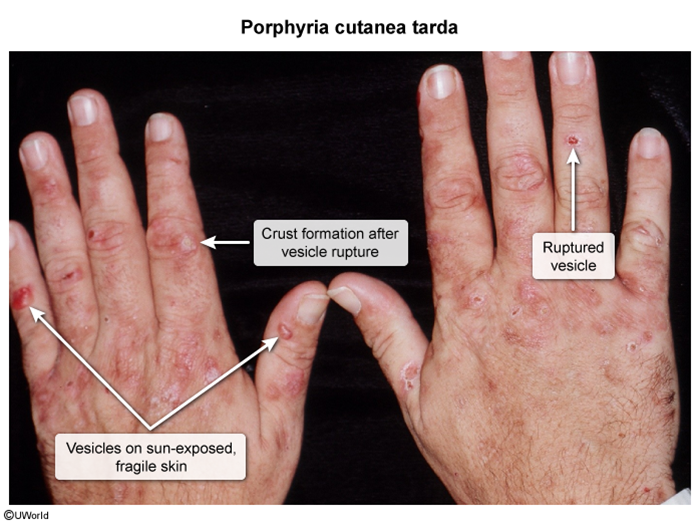Hemochromatosis
Article Sections
Introduction
Hereditary hemochromatosis (HH) is a common autosomal recessive disorder characterized by excessive accumulation of iron in the body, leading to multiorgan damage.
Pathophysiology
HH is most commonly caused by mutations affecting the HFE protein (Figure 1). This protein normally interacts with the transferrin receptor to form a complex that functions as a sensor of iron stores. HH mutations that impact HFE protein (eg, missense mutation C282Y affecting HFE gene) cause enterocytes and hepatocytes to falsely detect low iron levels. This leads to increased iron accumulation in the body through the following mechanisms:
- Enterocytes respond by increasing apical expression of divalent metal transporter 1 (DMT1), increasing iron absorption from the intestinal lumen.
- Hepatocytes respond by decreasing hepcidin synthesis; low hepcidin levels result in increased ferroportin expression on the basolateral surface of enterocytes. This allows increased iron secretion into the circulation, leading to iron overload.
Continue Learning with UWorld
Get the full Hemochromatosis article plus rich visuals, real-world cases, and in-depth insights from medical experts, all available through the UWorld Medical Library.
Figures

Images


